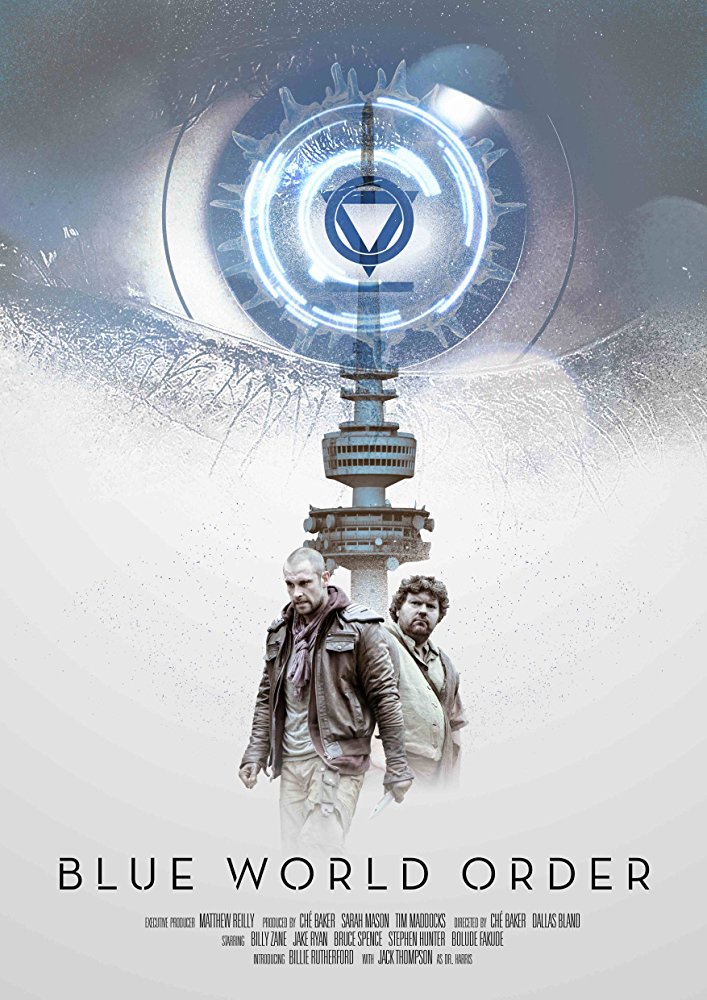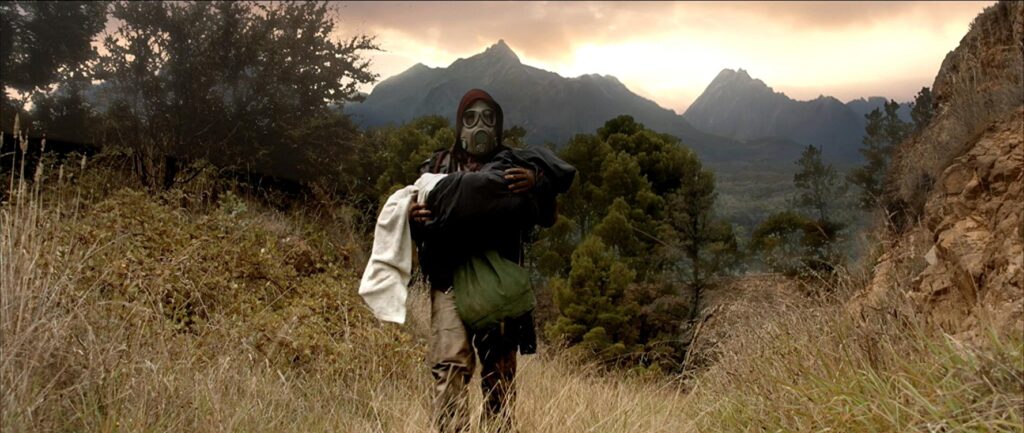NYFA Australia instructor Timothy Maddocks has taken the philosophy of learning by doing a step farther: teaching by example, continuing to not only remain active in his industry, expanding his impressive list of producing credits with a new feature and festival award wins. “Blue World Order,” which Maddocks produced, is causing a stir on the festival circuit, screening at the prestigious Madrid International Film Festival and sweeping awards elsewhere including:
Winner, Best Narrative Feature; Film Invasion Los Angeles
Winner, Audience Choice; Canberra International Film Festival
Winner Best Feature; Mindfield Los Angeles
Official Selection: Sci-Fi London, Madrid International (Nominated for Best Film), Burbank International, Phoenix Comic Con
“Blue World Order” also co-stars fellow NYFA instructor Stephen Hunter, perhaps best known for his turn as Bombur in “The Hobbit” films. NYFA had a chance to catch up with Mr. Maddocks to hear some of his insights on producing high quality films for the festival circuits, and how his students can continue learning by doing out in the industry.
NYFA: First, can you tell us a little bit about your journey and what brought you to NYFA?
TM: My road to producing and teaching has been a long one. It started with working shooting sports and community TV, then studying a diploma of film and television at TAFE. After my studies I used sports cameras to shoot several short films with friends where we all honed our skills. Some of the films were OK, but many of them were just lessons for us. After about 10 shorts we got together and shot a low budget feature film called “Sum of Existence” that we eventually sold to the National Nine Network. I thought that having made something we would be able to get funding more easily, but in the end it still took a number of years.
One night, while showing one of the last of the short films at an event, I was approached by another director who had a film screening there, Marc Furmie, and we went for funding on a short and got it.
“Death’s Requiem” was the first film to have a decent budget — twice what we had for “Sum of Existence,” and it opened doors to many other places. Through networking I met people who funded our first full budget feature, “Terminus.”
Along the way, one of the people I had met was Hunter McMahon and after he saw “Terminus” he invited me to come and speak to the students at NYFA as a one-off. The students asked a lot of questions, and as it happened, NYFA was looking for a teacher for production — so I joined the school.
NYFA: Do you have a favorite NYFA moment from your time as an instructor with us?
TM: My favourite moment at NYFA came when I was working on my third feature, “Out of the Shadows,” and some students came on a field trip to assist with shooting pick-ups. I know the students got a lot out of that day and it felt good to give them real hands-on experience, because NYFA is all about the experience of making things, rather than just classroom learning.
NYFA: As a producer, what do you look for in a project?
TM: The script is the guide. Firstly, you have to be able to read it from cover to cover without wanting to put it down. Then, you think about genre, market, and how you can get it made. As I’ve grown, so have my tastes, and while I have been known for producing horror and thrillers, “Blue World Order” was a sci-fi and a great story to start with.
NYFA: What inspired your film “Blue World Order,” which you produced?
TM: “Blue World Order” was written by Ché Baker, and he is also a published author as Scott Baker. I read both his script and novel ,and saw the enormous potential in the world that he had created because, like all of the best sci-fi, it is only a small stretch from the world we live in — and that is what makes it easy to relate to. Ché had met me back in the sports days and reached out to get my opinion of the script. I gave him notes and he could see how they helped with the story. From then on, we started talking about how to make the film.
NYFA: Can you tell us a bit about your experience producing the film? Were there any surprises along the way?
TM: Producing the film was a great experience. We had the challenges that most face: limited time, budget, and resources, however Ché had really made a great start in that he had many of the people of Canberra on his side and they welcomed us with open arms. Ché had also worked on several films in crew roles and had made some good connections in both cast and crew. I had also worked with some great people. We set up the schedule so that the first couple of days on set had Bruce Spence starring as Whippet — a very dark character. Bruce brought him to life and that really sparked our crew.
Many of the crew were Canberra locals with little or no on-set experience. In the middle of the shoot we had Jack Thompson come and that gave everyone a fresh injection. And partly because I was still closing the deal with the Department of Immigration, and also his agent, but the last few days were with Billy Zane. Ché had met Billy in the U.S. when he was working as an on-set driver and the two had hit it off. Billy came along and helped us finish the main block of shooting. As is often the case, there were pick-ups done later, but at the end of five weeks we had the makings of a film.
NYFA: “Blue World Order” has swept quite a few film festival awards. What advice would you offer to students interested in producing quality films and competing at renowned festivals?
TM: “Blue World Order” has picked up several awards, and so did “Death’s Requiem, The New Life,” and it is always the same reason: Because when we get an opportunity to make a film it is our job to pour everything into it.
No one gives you the opportunity. You earn it. Ché knew that and he poured everything he had into “Blue World Order,” and his passion was infectious. Our crew were drawn from film students to other people who just wanted to give it a go. A few of us had worked together before, like Production Designer Merryn Schofield who had been in the art department on “Terminus,” but being the designer was a big break for her and she had a great group of locals who are inseparable friends today.
The thing anyone who has made a film knows, is that making it is only half the battle — getting it out there is the next part. You have to send it to festivals, research which ones are appropriate, and push, push, push. That’s the only way that industry buyers are going to notice your film, and from there, the real audience can discover it.
NYFA: The film co-stars fellow NYFA Instructor Stephen Hunter. Can you tell us how that collaboration came about?
TM: During his time on “The Hobbit” movies where he worked with Andrew Lesnie as his on-set colourist, Ché had made friends with Stephen Hunter, who played Bombur. Stephen read an early draft and gave Ché feedback and really brought the humour to the script. All of the best films are collaborations: Everyone brings something to the table, and the best directors and producers are the ones who know how to bring those ideas to the fore and make the film better each time. Stephen was full of ideas and willing to get in there and give things a go. It was a great opportunity for him to step into a role that had a lot more going on for his character too.
NYFA: Would you say your time at NYFA was at all useful in preparing you for your work on “Blue World Order”?
TM: My time at NYFA was helpful in that every time I do anything I look for the learning experience in it. As someone who had come from sports and worked into film, I hadn’t really sat down and broken down the elements of what I do as a producer until I had to teach students.
Teaching other people gives you structure, and structure is important when managing a large project like a feature film. As a teacher I always love the enthusiasm students bring, and the attitude is one of “just do it” and I encourage that, but then impart on students some of the lessons that I have learned along the way.
You can spend just as much time and money making a terrible film as making a good one — the difference is in the planning.
NYFA: Can you tell us about any upcoming projects you’re working on, or what’s next for “Blue World Order”?
TM: Since “Blue World Order” spent a long time in post-production because of the special effects involved in sci-fi, I was able to get on and make “Out of the Shadows” while Ché, as director/producer saw “Blue World Order” home. “Out of the Shadows” is also making its way into the world.
I’ve also started working on IMAX documentaries and helped Jen Peedom on “Mountain,” which is releasing soon.
“Blue World Order” is going through the screenings for the AACTA awards and has screened in Melbourne on Sept. 12, Sydney on the Sept. 16, and Brisbane on Sept. 19. Any AACTA members can head along and see the film and vote for it there.
Then later in the year there are more screenings open to the public in Australia. It is being sold by Arclight worldwide and so we’ll have to see where they get traction for the release. If you’re a student who is curious, then sign up for updates here.
NYFA: Is there anything I missed that you’d like to speak on?
TM: I’d really just like to reinforce how important it is to be passionate about your career in film, as no one else is going to care as much as you. Every time you get an opportunity to work on a film in whatever role it is, if you give it your all, people will notice. Several cast and crew that I have worked with on small films have come on to larger ones, and usually in greater roles. I do it myself where I have helped people out and then found myself with work. NYFA students often have that passion and some of my students are already building careers for themselves. I really enjoy working with people who seize the opportunities and then go on to create more.
The New York Film Academy would like to thank Timothy Maddocks for taking the time to share his experience producing “Blue World Order” with our community.

